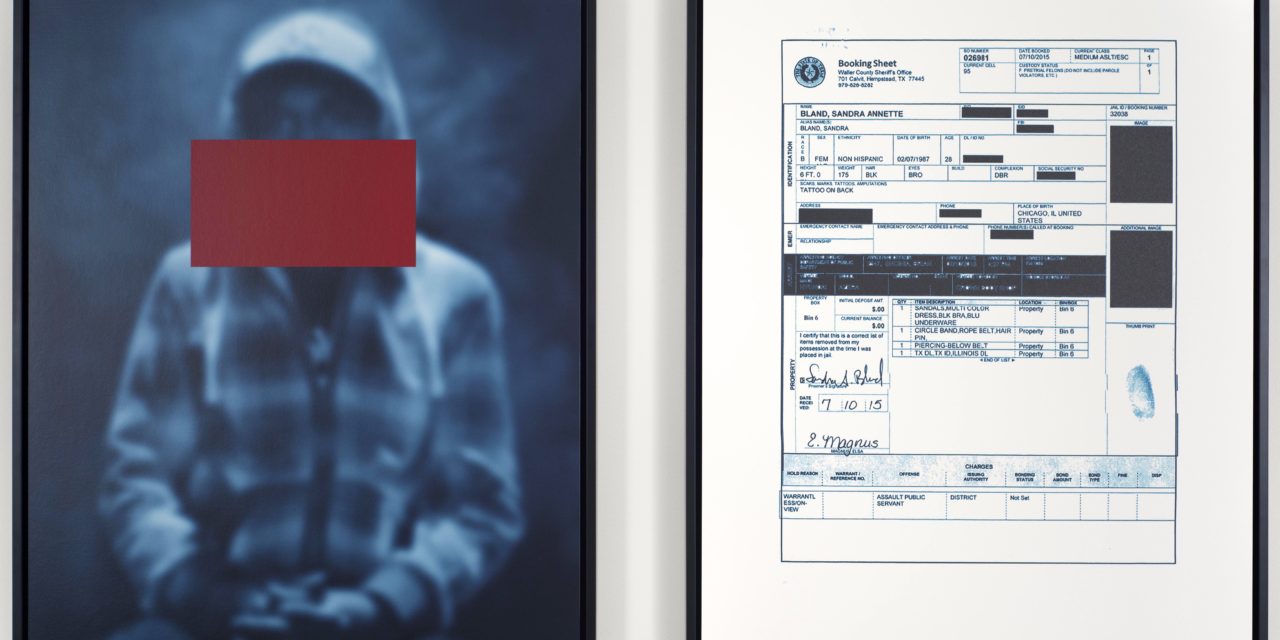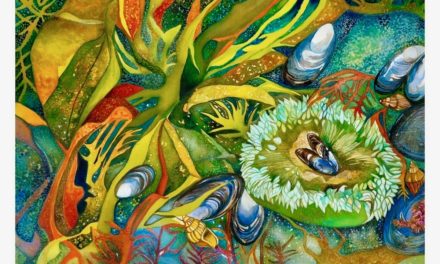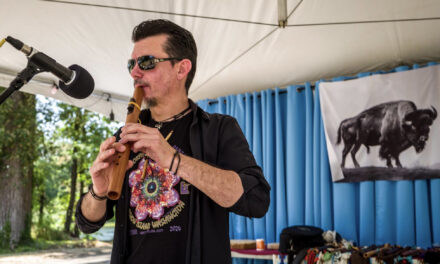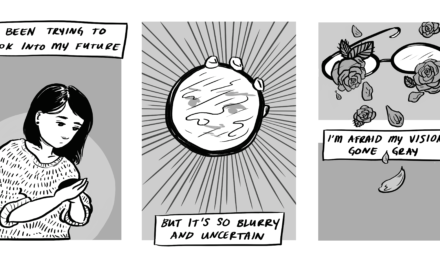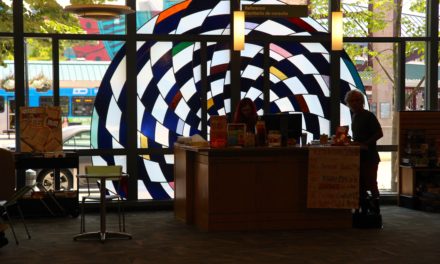(Above: An image from a recent show of Black artist Carrie Mae Weems photographs at the Jordan Schnitzer Museum of Art at the University of Oregon, illustrating the number of Black people who have died at the hands of law enforcement officers)
By Randi Bjornstad
The Black Lives Matter movement exploded onto the national sensibility in the United States with the murder of George Floyd in Minneapolis in May 2020, when police officer Derek Chauvin knelt with his knee on Floyd’s neck for 8 minutes 46 seconds as the 46-year-old Black man lost consciousness and died, outside a convenience store where a clerk suspected that Floyd had made a purchase with a counterfeit $20 bill.
Many consider the event and its torrential effect to rank on a par with the civil rights movement that rocked the nation in the early 1960s, when Black people young and old pressed their claims to equal opportunity to education, equal access to lunch counters and seats in public transportation, and equal rights to vote for public officials to serve them in elective offices.
Clearly, progress has been made since then, but equally clearly, it has been far from enough. The death of Floyd and countless other Black people at the hands of police officers and prison executioners — completely out of proportion to their white counterparts — reveals a continuing, systemic racism that has ignited a new round of soul-searching that calls for pervasive and permanent action not only to change behavior but also to make amends.
Art is one way in which many believe these issues of social injustice can be raised, illuminated, and set on a new course. One step toward that goal has been announced recently at the Jordan Schnitzer Museum of Art on the University of Oregon campus.
Its namesake, Jordan Schnitzer, who is president of The Harold and Arlene Schnitzer CARE Foundation and the Jordan Schnitzer Family Foundation, stood on the museum steps to announce a new Black Lives Matter Artist Grant Program that will award a total of $150,000 in grants to artists, divided equally among the three Jordan Schnitzer Museums of Art at the UO, Washington State University, and Portland State University.
Each museum will award $2,500 grants to 20 artists who will use the funds to express their views on social justice and the consequences of systemic racism.
“I have often said artists are chroniclers of our time,” Schnitzer said. “We all feel anguish about the death of George Floyd and many others at the hands of racial oppression. We more than ever need artists to help us understand this issue and help us heal.”
At the UO, the museum will work in concert with the nearby Lyllye Reynolds-Parker Black Cultural Center, which opened 10 months ago with the goal of helping Black students to maximize their academic, cultural and social success at the university.
At the UO, the museum will work in concert with the nearby Lyllye Reynolds-Parker Black Cultural Center, which opened 10 months ago with the goal of helping Black students to maximize their academic, cultural and social success at the university.
Artists selected to receive grants through the UO portion Black Lives Matter Grant program are eligible if they live in Oregon but outside Multnomah, Clackamas, Columbia, and Washington counties, which are part of the Portland State University grant program area.
The deadline to submit proposals for new work or recently created work specifically related to Black Lives Matter themes is Sept. 30. Art in all mediums is appropriate for application. Works selected for inclusion will be part of an exhibit later in 2020.
Artist submissions will be reviewed by a panel that includes John Weber, director of the Jordan Schnitzer Museum of Art at the UO, Aris Hall, coordinator of the Lyllye Reynolds-Parker Black Cultural Center; Sabrina Madison-Cannon and Phyllis and Andrew Berwick of the UO School of Music and Dance; Jamar Bean, program advisor of the UO Multicultural Center, and Jovencio de la Paz, assistant professor in the UO Dept. of Art.
Successful applicants will be notified by Oct. 31.
The Jordan Schnitzer Museum of Art at the University of Oregon has a long history of exhibiting work by Black artists, including shows such as The Usual Suspects by Carrie Mae Weems; a reading of Ta-Nehisi Coates’ Between the World and Me; Mirror, Mirror: The Prints of Alison Saar; Emancipating the Past: Kara Walker’s Tales of Slavery and Power; Beyond Mammy, Jezebel & Sapphire: Reclaiming Images of Black Women; and Witness: Themes of Social Justice in Contemporary Printmaking and Photography.
The deadline to submit proposals for new work or recently created work specifically related to Black Lives Matter themes is Sept. 30. Art in all mediums is appropriate for application. Works selected for inclusion will be part of an exhibit later in 2020.
Artist submissions will be reviewed by a panel that includes John Weber, director of the Jordan Schnitzer Museum of Art at the UO; Aris Hall, coordinator of the Lyllye Reynolds-Parker Black Cultural Center; Sabrina Madison-Cannon and Phyllis and Andrew Berwick of the UO School of Music and Dance; Jamar Bean, program advisor of the UO Multicultural Center; and Jovencio de la Paz, assistant professor in the UO Dept. of Art.
Successful applicants will be notified by Oct. 31.
Application information is online at https://jsma.uoregon.edu/BLMArtistProjectGrant

